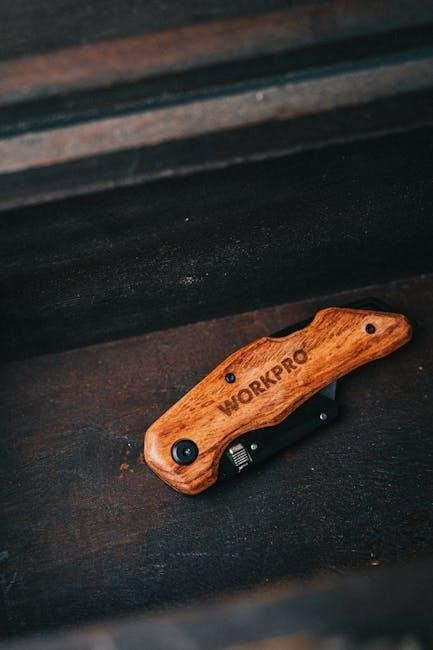This comprehensive guide serves as your primary resource for operating your Sharp portable air conditioner. It provides detailed instructions, safety precautions, and troubleshooting tips. Keep this manual handy for future reference to ensure optimal performance and longevity of your unit.
Sharp portable air conditioners offer a convenient and efficient solution for cooling individual rooms without the need for permanent installation. These units are designed for ease of use, providing cooling, dehumidifying, and sometimes ventilating functions, all in a single, mobile appliance.
Sharp’s portable air conditioners are ideal for homes, apartments, offices, and other spaces where traditional air conditioning systems are not feasible or desired. Their portability allows you to move the unit from room to room, providing targeted cooling where and when you need it most.
This manual covers a range of Sharp portable air conditioner models. Each model boasts unique features and capabilities, but they all share a common goal: to provide comfortable and efficient climate control. This instruction manual will guide you through the setup, operation, maintenance, and troubleshooting of your Sharp portable air conditioner, ensuring you get the most out of your investment. Understanding the features and functionalities of your specific model will enhance your overall experience and ensure optimal performance.
With proper care and maintenance, your Sharp portable air conditioner will provide years of reliable cooling and dehumidification.
Identifying Your Specific Sharp Model
Before proceeding with the setup and operation of your Sharp portable air conditioner, it’s crucial to identify your specific model. This will ensure you’re referencing the correct instructions and specifications throughout this manual.
The model number is typically located on a sticker or nameplate on the unit itself. Common locations include the side panel, back panel, or bottom of the unit. Look for a combination of letters and numbers, such as CV-P10RC or CV10NH.
Once you’ve located the model number, compare it to the models listed in this manual. This will help you determine the specific features and functions available on your unit.
Knowing your specific model is essential for several reasons. First, it ensures that you are following the correct installation procedures, as some models may have unique requirements. Second, it allows you to access model-specific troubleshooting tips and warranty information. Finally, it helps you identify compatible replacement parts and accessories if needed.
Taking the time to identify your Sharp portable air conditioner model will save you time and frustration in the long run.
Safety Precautions and Warnings
Prioritizing safety is paramount when operating any electrical appliance, including your Sharp portable air conditioner. Carefully read and understand the following precautions to minimize the risk of fire, electric shock, or injury.
Electrical Safety: Always plug the unit into a grounded outlet with the correct voltage. Never use an extension cord or adapter. Do not operate the unit with a damaged cord or plug. If the cord is damaged, it must be replaced by a qualified technician.
Operation: Never block the air intake or exhaust vents. Place the unit on a level surface to prevent tipping. Do not use the unit in wet or humid environments, such as bathrooms or laundry rooms. Always turn off and unplug the unit before cleaning or servicing.
Children and Pets: Keep children and pets away from the unit to prevent injury. Never allow children to play with the unit or its controls.
Maintenance: Regularly clean the air filter to maintain optimal performance and prevent overheating. Do not attempt to repair the unit yourself. Contact a qualified technician for any repairs.
Flammable Materials: Do not store or use flammable materials near the unit.
By adhering to these safety precautions, you can ensure the safe and reliable operation of your Sharp portable air conditioner.
Initial Setup and Installation
Proper setup and installation are crucial for optimal performance of your Sharp portable air conditioner. Follow these steps carefully to ensure efficient cooling and dehumidifying.
Unpacking: Carefully remove the unit from its packaging. Inspect for any visible damage. Ensure all components are included: the air conditioner, exhaust hose, window panel kit, and remote control.
Location: Choose a location near a window for venting the exhaust hose. Ensure the area is level and free from obstructions. Allow sufficient space around the unit for proper air circulation.
Window Panel Installation: Adjust the window panel kit to fit your window. Secure the panel in place using the provided hardware. Attach the exhaust hose to the window panel adapter.
Exhaust Hose Connection: Connect the other end of the exhaust hose to the air conditioner. Ensure both connections are secure and airtight. The exhaust hose should be as straight as possible to maximize airflow.
Power Connection: Plug the power cord into a grounded electrical outlet with the correct voltage. Avoid using extension cords.
Testing: Turn on the air conditioner and verify that it is cooling properly. Check for any air leaks around the window panel and exhaust hose connections.
By following these steps, you can successfully set up and install your Sharp portable air conditioner for immediate use.

Understanding the Control Panel and Remote
Familiarizing yourself with the control panel and remote is essential for effectively operating your Sharp portable air conditioner. Both offer intuitive controls for adjusting settings and modes.

Control Panel: Typically located on the top or front of the unit, the control panel features buttons for power, mode selection (cooling, dehumidifying, fan), temperature adjustment, fan speed, and timer settings. An LED display shows the current temperature and settings.
Remote Control: The remote control mirrors the functions of the control panel, providing convenient operation from a distance. It usually includes additional features like a sleep mode or a swing function for directing airflow.
Power Button: Turns the air conditioner on or off.
Mode Button: Cycles through the available operating modes.
Temperature Buttons: Increase or decrease the desired room temperature.
Fan Speed Button: Adjusts the fan speed to low, medium, or high.
Timer Button: Sets a timer for the unit to automatically turn on or off after a specified period.
Display: Shows the current temperature setting, mode, and timer information.
Consult the specific model’s manual for a detailed explanation of each button and function. Proper understanding of these controls ensures optimal comfort and energy efficiency.
Operating Modes: Cooling, Dehumidifying, and Fan

Sharp portable air conditioners offer versatile operating modes to suit your comfort needs. Understanding each mode ensures efficient and effective use of your unit.

Cooling Mode: This is the primary function, lowering the room temperature to your desired setting. The air conditioner exhausts hot air outside while circulating cool air indoors. Adjust the temperature and fan speed for optimal cooling.
Dehumidifying Mode: This mode removes excess moisture from the air, creating a more comfortable environment. It’s ideal for humid days or damp rooms. The unit extracts moisture, collecting it in an internal tank or directing it through a drain hose.
Fan Mode: This mode circulates air without cooling or dehumidifying. It’s useful for creating a gentle breeze or improving air circulation in the room. You can adjust the fan speed to your preference.
Mode Selection: Use the “Mode” button on the control panel or remote to cycle through the available options. The display will indicate the selected mode.
Optimal Use: Choose the cooling mode when you need to lower the room temperature. Use the dehumidifying mode to reduce humidity levels. Select the fan mode for simple air circulation without cooling.
Refer to your specific model’s manual for detailed instructions and recommended settings for each mode. Proper mode selection maximizes comfort and minimizes energy consumption.
Maintenance and Cleaning Procedures
Regular maintenance and cleaning are crucial for optimal performance and longevity of your Sharp portable air conditioner. Neglecting these procedures can lead to reduced efficiency, unpleasant odors, and potential damage to the unit.
Filter Cleaning: Clean the air filter every two weeks, or more frequently if used in dusty environments. Remove the filter and wash it with mild soap and water. Allow it to dry completely before reinstalling. A clean filter ensures efficient airflow and prevents dust buildup.
Unit Cleaning: Wipe down the exterior of the unit with a soft, damp cloth. Avoid using harsh chemicals or abrasive cleaners, as they can damage the finish. Ensure the unit is unplugged before cleaning.
Water Tank Drainage: Regularly drain the water tank to prevent overflow and potential water damage. Some models have a continuous drain option using a hose.
Storage: When storing the unit for extended periods, ensure it is clean and dry. Cover it with a protective sheet or bag to prevent dust accumulation. Store in a cool, dry place.
Coil Cleaning: Periodically clean the cooling coils to remove dust and debris. This may require professional servicing.
Hose Inspection: Inspect the exhaust hose for any cracks or damage. Replace the hose if necessary to ensure proper ventilation.
Troubleshooting Common Issues
Encountering issues with your Sharp portable air conditioner can be frustrating. Before seeking professional help, try these troubleshooting steps to resolve common problems.
Unit Not Turning On: Ensure the unit is plugged in securely and the power outlet is functioning correctly. Check the circuit breaker or fuse box to rule out power supply issues.
Insufficient Cooling: Verify that the air filter is clean and the exhaust hose is properly connected and not blocked. Close windows and doors to prevent warm air from entering the room. Check if the cooling capacity is appropriate for the room size.
Unusual Noises: Investigate any unusual noises, such as rattling or grinding. These could indicate loose components or obstructions in the fan. Contact a qualified technician if the noise persists.
Water Leakage: Check if the water tank is full and needs to be drained. Ensure the drain plug is securely in place. Inspect the drain hose for any leaks or clogs.
Error Codes: Consult the user manual for specific error code meanings and recommended solutions. Some error codes may require professional servicing.
Remote Control Issues: Replace the batteries in the remote control. Ensure there are no obstructions between the remote and the unit’s receiver.
If these troubleshooting steps do not resolve the issue, contact Sharp customer support or a qualified technician for further assistance.
Warranty Information and Support
Your Sharp portable air conditioner is backed by a limited warranty against manufacturing defects in materials and workmanship. The warranty period typically lasts for one year from the date of original purchase. Please retain your purchase receipt as proof of purchase, as it is required for warranty service.
The warranty covers repairs or replacement of defective parts, subject to the terms and conditions outlined in the warranty document included with your unit. It does not cover damage caused by misuse, neglect, improper installation, unauthorized repairs, or normal wear and tear.
To obtain warranty service, contact Sharp customer support via phone or their website. You may be required to provide the model number, serial number, and a description of the problem. Sharp will then provide instructions on how to proceed with the warranty claim.
In addition to warranty service, Sharp customer support can also assist with technical inquiries, troubleshooting, and general product information. Their website offers a comprehensive FAQ section and downloadable user manuals.
For out-of-warranty repairs, Sharp can provide referrals to authorized service centers in your area. Please note that you will be responsible for all costs associated with out-of-warranty repairs.
Sharp strives to provide excellent customer support and ensure your satisfaction with their products.
Disposal and Environmental Considerations
When your Sharp portable air conditioner reaches the end of its lifespan, it is crucial to dispose of it responsibly to minimize environmental impact. Do not dispose of the unit in regular household waste. Instead, follow local regulations and guidelines for proper disposal of electronic waste.
Portable air conditioners contain refrigerants, which are harmful to the environment if released into the atmosphere. Contact your local waste management authority or recycling center to inquire about designated collection points for appliances containing refrigerants.
Many municipalities offer e-waste recycling programs that accept portable air conditioners. These programs ensure that the refrigerants are safely recovered and the unit is dismantled in an environmentally sound manner. Alternatively, you can contact a certified appliance recycler to handle the disposal process.
Before disposing of the unit, remove any batteries from the remote control and dispose of them separately according to local regulations for battery disposal. Consider contacting local retailers that offer battery recycling programs.
By properly disposing of your Sharp portable air conditioner, you contribute to environmental protection and the conservation of natural resources. Responsible disposal prevents the release of harmful substances and promotes the recycling of valuable materials.
Always prioritize environmental stewardship when handling electronic waste.

